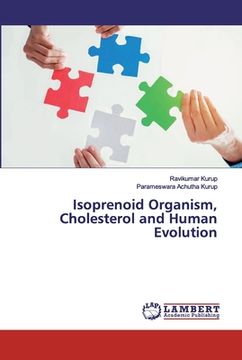Share
Isoprenoid Organism, Cholesterol and Human Evolution
Ravikumar Kurup
(Author)
·
Parameswara Achutha Kurup
(Author)
·
LAP Lambert Academic Publishing
· Paperback
Isoprenoid Organism, Cholesterol and Human Evolution - Kurup, Ravikumar ; Achutha Kurup, Parameswara
Choose the list to add your product or create one New List
✓ Product added successfully to the Wishlist.
Go to My Wishlists
Origin: U.S.A.
(Import costs included in the price)
It will be shipped from our warehouse between
Monday, August 12 and
Thursday, August 22.
You will receive it anywhere in United Kingdom between 1 and 3 business days after shipment.
Synopsis "Isoprenoid Organism, Cholesterol and Human Evolution"
Neanderthals evolved by archaeal endosymbiosis. Archaea can oxidize cholesterol for its energetics. Initial primitive organism would have been an isoprenoid organism. The primitive protocell would have been a droplet capable of division &replication. Lipid droplets formed of isoprenoids would have been the primitive isoprenoid organism. The incorporation of ubiquinone would have permitted a primitive electron transport chain &ATP synthesis. Lipid droplet organelle is capable of self-replication. Isoprenoid organism would have been the original primitive protoarchaea. Archaeal endosymbiosis eventually led to evolution of multicellular organism, primates &homo neanderthalis. The induction of the SLOS mutation leads to decreased cholesterol synthesis. Cholesterol oxidation is required for archaeal energetics. SLOS mutation producing autism results in decreased cholesterol synthesis and decreased substrates for archaeal energetics. Defective archaeal energetics leads to decreased density of endosymbiotic archaea &eventual extinction of the homo neanderthalic species. The homo neanderthalic species with reduced endosymbiotic archaeal density becomes the homo sapiens species.
- 0% (0)
- 0% (0)
- 0% (0)
- 0% (0)
- 0% (0)
All books in our catalog are Original.
The book is written in English.
The binding of this edition is Paperback.
✓ Producto agregado correctamente al carro, Ir a Pagar.

